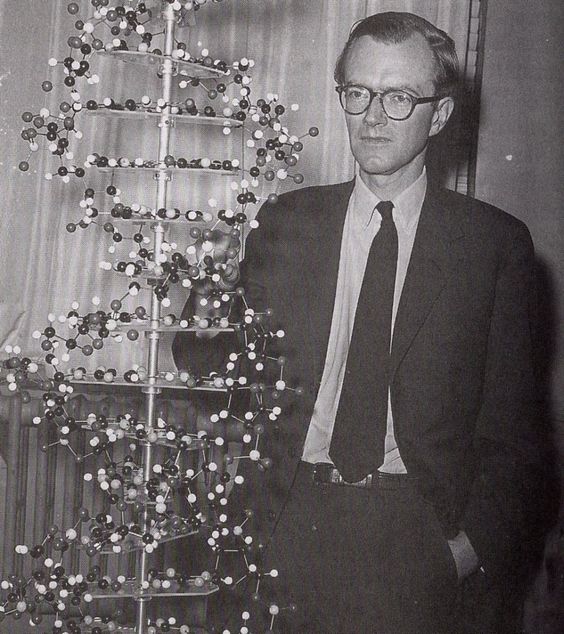Maurice Wilkins was one of the key scientists involved in the discovery and verification of the structure of DNA.
Wilkins began investigating DNA after working on radar screens and the Manhattan Project during World War II. Like many scientists, he was worried the Nazis could develop nuclear weapons, and was appalled when the Americans used the atom bomb on Japanese civilians.
From then on, he decided to study “the science of life”, rather than “the science of death”. All Wilkins’s work on DNA took place at King’s College London, and occurred in three main phases.
In the 1940s, scientists already knew DNA existed. Most thought this gooey substance was of no importance to genetics, some called it the “Stupid Molecule”. Even Wilkins friend, Francis Crick, advised him to drop DNA work and “Find yourself a good protein…”
But Wilkins and his assistant, Raymond Gosling, disagreed. They had found DNA could be pulled into thin fibbers and decided to investigate. They mounted some fibbers on a paper clip, put them in a vacuum pump, and fired a beam of X-rays at them. When the beam hit the atoms inside the fibbers, the X-ray scattered, producing this photographic pattern. What this regular pattern of dots shows is that gooey sticky DNA actually has a crystalline structure at the atomic level. This technique is called “X-ray crystallography” and Wilkins believed that with enough X-ray images, he could deduce the three-dimensional structure of the DNA molecule. And once the structure was known, he might find out how DNA worked.
During phase two, Wilkins continued investigating DNA using X-ray crystallography. Using samples of live sperm from squid, he produced clear X images, and sketched these in a letter to Francis Crick in 1952. Wilkins’ colleague, Alex Stokes, jested the X meant that DNA could be helical. James Watson later said Wilkins has “produced extremely excellent photographs”. During this time, Wilkins’ colleague, Rosalind Franklin, also took highly detailed photographs of DNA and found it existed in two forms, A and B. In April 1953, James Watson and Francis Crick, using data from Franklin and Wilkins, proposed the double helix model of DNA.
The third, longest phase of Wilkins’ work, began after this discovery. Watson and Crick did no experiments to check their model and wrote, “it must be regarded as unproved until checked against more exact results”. Their version one double helix actually contain a mix of data from DNA’s A and B forms, and, while very elegant, simply didn’t fit the X-ray images.
It was Wilkins and his team who took this problem on. With improved equipment, they took hundreds of increasingly accurate photos of DNA, from dozens of sources, including calves, mice, chickens, salmon, squid and humans.
Wilkins wrote, “the more experimental data we produce, the more laborious our calculations became”. So the latest computers were used to analyse the images. In all, it took the best part of a decade to produce a fully verified double helix. By studying DNA from so many sources, Wilkins team also helped establish what is now common knowledge, that DNA is present and similar in virtually all forms of life. They also discovered a third C form of DNA and went on to study other nucleic acids including RNA.
By the 1960s, the scientific community had realized DNA was crucial to the emerging science of genetics, this meant Watson, Crick, Wilkins and Franklin could all have been potential Nobel Prize winners. But Franklin had died in 1958, and could no longer be nominated. It was for the entire body of his experiment to work on nucleic acids, including DNA, that Maurice Wilkins, along with Watson and Crick, was awarded the Nobel Prize in 1962.

